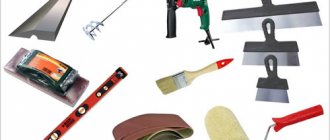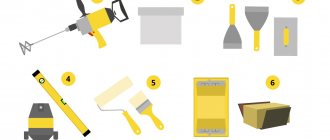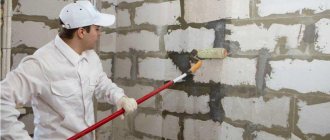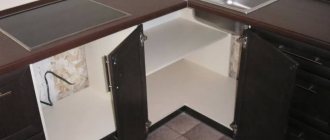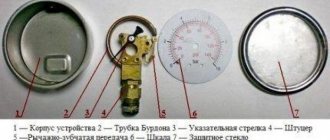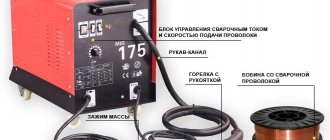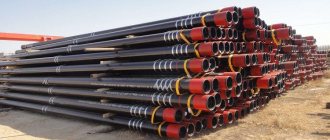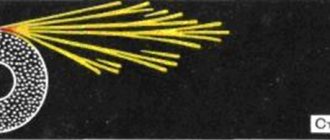On trading floors, decorative elements for finishing are presented in a large assortment. Let's look at what wall moldings are, how and where they can be used, and what design options exist. Let's take a look at the general recommendations from designers. After reading the article, you will be able to independently understand the variety of finished products and make the right choice for decorating a particular space.
Wall molding Source salon-baget.ua
Types of baguette
Thanks to modern technologies in production, the possibilities of using baguettes are expanding. Nowadays, polyurethane molding is difficult to distinguish from plaster stucco molding of the Baroque era, the unreal shine of the aluminum profile evokes thoughts of spaceships, and lightweight plastic plinths imitate richly gilded frames.
The planks are made from wood, plastic, and aluminum. Each material has features that should be taken into account when planning the design of ceilings and walls.
A wooden baguette is a traditional and understandable solution. The best material for framing pictures has not yet been invented. Especially if the frames are made by hand and contain the positive energy of the master. Unfortunately, for mass production this is a complex, capricious material to process and store. Although its use is justified in country and Provence style interiors.
Gypsum baguettes fit perfectly into interiors in a classic style or luxurious baroque. They emphasize the respectability and solidity of the house. It is difficult to work with plaster; it is fragile, heavy, and afraid of moisture. Therefore, consumers increasingly prefer the use of decor made of polyurethane and plastic.
Polyurethane moldings are quite light, flexible and durable. Therefore, in addition to walls and ceilings, they are used in the design of curved structures. Due to their light weight, they can be glued only from one edge, for example, to the wall when installing suspended ceilings and lighting cornices. Manufacturers are constantly releasing new collections, expanding their range, and trying to keep up with fashion trends.
Related article: Useful tips for decorating a niche in the wall
Plastic baguettes are used in the interior when installing suspended ceilings and plasterboard structures. Externally, they look like skirting boards with grooves for locks, most often white. There is a decorative baguette on sale that imitates the pattern of wood or marble. Having the skills to work with paints, you can apply a pattern or paint the baseboards yourself.
Aluminum profiles are used in the construction of suspended ceilings. The planks bend easily and follow the contours of a curved structure. The possibilities for using aluminum are quite varied. For example, in high-tech style, metallic gloss serves as a worthy frame for a poster, mirror, or photograph.
Be careful: foam baguettes are cheap and easy to use. But don’t be fooled by their pretty appearance, because the material tends to crumble and the work will look cheap and untidy.
To summarize, we note: the most natural baguette is made of wood and plaster, the most durable is made of aluminum, the cheapest is made of foam plastic.
We focus on design
The role of fillets in interior design should not be underestimated. With the help of discreet, but noticeable elements, it is easiest to emphasize the chosen style direction. Ceiling plinth can become the finishing touch and create complete harmony.
Classic style
Interiors made in a classic style can easily be spoiled by just one detail, for example, by using a banal rubber or plastic plinth for a stretch ceiling in the decoration. For an elegant environment, elegant baguettes made of polyvinyl chloride imitating wood or exquisite stucco, or plinths made of natural wood are more suitable.
The color of the fillets should be in harmony with the rest of the finish
When choosing a color, you should focus on the general background in the interior: sharp contrasts with the decoration of the walls or ceiling are unacceptable. If it’s difficult for you to decide, give preference to white fillets. They will fit harmoniously into any interior, regardless of the shades in which it is made. Golden-colored borders with bronze or gilding will also look good - a little pretentiousness to the classics won’t hurt. When choosing a plinth for a stretch ceiling, you can first study photos of suitable solutions in catalogs.
Carved bronze borders are ideal for rooms with a classic interior
Country
The interior in a rural style focuses on the naturalness of materials and suggests the use of wooden decorative elements as accents. And then the optimal choice would be plinths for a stretch ceiling made of natural wood, but a high-quality imitation of this material will also do. The interior design will be complemented by carefully selected fastener elements - they can be made in the same style, representing metal strips with a touch of patina, or imitate carpet any details.
Wood fillets will organically replace analogues that imitate natural material
Modern
The expression of this stylistic direction implies a predominance of curves and roundness. In the interior, it will look good to have wide and flexible skirting boards that can carefully wrap around any curve. An excellent option is the choice of flexible polyurethane fillets with a relief pattern in the form of floral designs. Modern loves the play of light, so a plinth with additional lighting around the perimeter of the ceiling will provide soft contour lighting.
The presence of many roundings places special demands on the flexibility of fillets
Modern style
Functionality and conciseness - this is how you can characterize the requirements for choosing skirting boards for rooms whose interior is made in a modern style. Pretentiousness and luxury are not inherent in it, and then the best option would be simple skirting boards with a smooth surface without relief patterns. Both polyurethane products and cheaper analogues - for example, made of polystyrene foam - are suitable.
The cost does not matter - the main thing is that the plinth does not stand out from the general style
Ceiling decoration
The ceiling molding has a double task: on the one hand, it masks the seam between the wall and the ceiling, on the other hand, it is a decorative element and decorates the room. Installing it is simple. For installation, a special glue is used, which is applied to the baguette and the wall surface to be pasted. For the convenience of consumers, corner models are produced so that you don’t have to think about how to cut the corner correctly.
A modern solution: a ceiling plinth with a thickened lower part and a special groove is glued at a distance of 20 cm from the ceiling. An LED strip is placed on top along the perimeter of the walls. An interesting ceiling lighting effect is created.
Adhesive for moldings: which one to choose?
Glue for moldings must be selected based on what material served as the basis for the manufacture of the product. So, for wood models you will need to use special adhesives designed for working with wood. Plastic variations should be glued with plastic glue, and foam plastic with any universal glue.
It is also important to focus on the weight of the material - the heavier the pad, the stronger and better quality the glue it will require. In general, some manufacturers make adhesives for different types of moldings, so it would be more advisable to use a specially designed adhesive instead of a universal compound.
Wall design
In the design of walls, baguette has many faces and is varied. It highlights a specific place on the wall and attracts the attention of viewers. For example, a collage of family photos or an antique cuckoo clock.
In another case, it zones the space, smoothes out the boundaries between wallpapers of different designs. The joint becomes invisible, and the space becomes more harmonious.
Related article: Selection and installation of balcony flower boxes (+ homemade pots)
You can install a contrasting baguette around the perimeter of the niche. This design will draw attention to the object. To make the niche look mysterious and romantic, frame its inside, add lighting, and complete the composition with a light, elegant curtain.
You won’t surprise anyone with paintings and posters on the walls. The designers went further, removed the paintings, leaving only the frame. Here it is, the highlight: the baguette in the interior acts as a frame. It is often made from expensive, refined materials. Depending on the style of the room, baguettes made of wood, polyurethane, plaster or aluminum act as frames on the wall.
Advice! Two or three A3 size frames located at a distance of 15-20 cm from each other will look harmonious on the wall.
Installation features
The choice of installation method depends on how the baguette looks relative to the reverse side. There are only three versions: a flat base, an elongated wall part and a short ceiling part, with identical edges for gluing in the corners. The first type is relevant for zoning a room, framing objects or niches from the outside, designing transitions of different materials, patterns, and colors of adjacent wallpaper, for example.
Greater interest today is directed towards the second baguette on the wall. It allows you to visually raise or make the ceiling heavier, and install hidden lighting without additional devices. To do this, it is enough to lower the upper edge at a horizontal level 2 cm lower. That is, the part for gluing to the flow will become a seat for the diode strip.
Backlight on a baguette strip Source 5watt.ua
Framing small elements
Mirrors, paintings, engravings, posters, tapestries, photographs... Everything becomes the object of close attention of the designer. Proper use turns these elements into interior highlights. A decorative baguette gives them a new sound and fits them organically into the space.
Tip: even a simple rectangular mirror will become modern and attractive in a new frame made of baguette. Cut the strips to the required length and glue them around the perimeter. The interior will sparkle with new colors!
How to make molding with your own hands: instructions
Wall molding is often done independently, without the help of highly qualified craftsmen. There is nothing complicated about this: all that is required is a few tools and knowledge of a clear work algorithm.
Prepare the necessary equipment in advance so that it is at hand. Also mark the wall surface to prevent incorrect gluing: it will not be possible to remove the molding from the lined surface without leaving a trace. Therefore, make sure that everything is smooth and neat.
Preparing tools
It is simply impossible to make decorative wall molding without specially selected tools. Therefore, we will need to stock up on appropriate equipment.
So, we need:
- file for cutting baguettes;
- a miter box that will help cut the molding at the desired angle;
- construction glue gun;
- spatulas;
- sandpaper for rubbing away excess particles of the product.
Step-by-step work
First of all, you will need to measure the required length of the moldings and cut them according to the specified parameters. Using a miter box, cut the corners.
After this, we glue the corner parts in the corners and then install the even ones: follow the notes you made in advance.
If even after all the parts are glued, there are gaps, we recommend lubricating them with the same adhesive composition. It should take at least 24 hours for it to completely harden.
The final touch to the design
Finally, a few more recommendations from designers.
- A narrow ceiling molding will visually increase the height of the walls, make the ceiling higher, vertical thin lines will give the room severity, and horizontal ones will add dynamics. Wide options are suitable for large rooms; they will make a small room “heavier” and visually it will seem cramped.
- If you want to choose a baguette with relief, focus on the general style of the interior, color and texture solutions. Remember that white is a universal color; it goes harmoniously with all shades. If you think that the design should be a different color, experiment and paint the baguette before starting work.
- Competently combine style, measure, and imagination in interior design. Then you will not have to regret the time, effort and money spent. The result will please you for many years.
Related article: Wall decor with “live” butterflies
Apartment design with baguette (2 videos)
Apartment design options with baguette (43 photos)
How to make a frame from ceiling plinth
To complete this work you will need:
- ceiling plinth made of polystyrene foam;
- universal adhesive base;
- acrylic wood putty;
- well sharpened knife;
- protractor;
- acrylic based paints;
- corrugated cardboard or packaging from household appliances.
The required picture is cut out of paper and glued to the ceiling slab. The latter should exceed the size of the picture by about 1 cm on each side.
Next, work is carried out on the production of frames from corrugated cardboard or ceiling plinth. First, a template for the future product is cut out. A rectangular shape is made from corrugated cardboard, and a hole is made in the center for a photograph or picture. The size of the frame depends on the size of the desired image that will subsequently be contained in it. Then an identical rectangle with a slightly larger window is cut out from the workpiece. Then the elements are glued to each other. The result is a ready-made place for inserting a picture. If you plan to use glass or a stretcher, you will need to make a couple more of the same rectangles with a wider window to glue them to the other side of the frame. The number of products depends on the thickness of the embedded image.
When the base is ready, they begin to decorate the frame with ceiling plinth. Each edge of the baguette is cut at an angle of 45 degrees. Mark the corners and cutting lines on the paper using a protractor, then lay down the strip and make marks on it. Then the 4 elements are cut off using a sharp knife. Next, the baguette is glued to the cardboard blank from the outside. The cracks in the corners are sealed with putty and paint. The work done must be left for some time until the glue completely dries.
Kitchen interior with photo wallpaper Source design-homes.ru
Then you need to putty the areas where the baguette meets the cardboard, as well as the joints at the corners and the back side of the frame. This solution will help strengthen the product and hide all uneven finishes. The ends of the frame are puttied several times, dried, and then each layer is sanded one by one using sandpaper.
The dried putty begins to be painted. It is best to use acrylic compounds or water-based emulsion. To get a milky tone, you can add a small amount of ocher to white paint. For a dark shade, black paint is mixed with red and dark brown. Then the finished product should be treated with water-based varnish.
Lastly, fasten the product. For this purpose, you can use thick twine, from which you cut from 10 to 14 cm. Then take a dense but thin piece of cardboard and cut out a rectangle with sides 5 by 7 cm. The rope is applied to the back side of the frame. After this, glue is applied and the cardboard is glued, which is pressed with a weight until it dries completely. Now the frame for photo wallpaper on the wall is ready, all that remains is to fix it on the mount and enjoy the result of the work done.
Popular “complex” colors
Nowadays, “complex” colors with all sorts of tones and halftones are considered popular. You need to remember the rule of three: when decorating the interior, do not use more than three colors so that the interior does not look tasteless.
When experimenting with contrasts, you should not get too carried away, so as not to overdo it with colors. Nowadays, large color patterns with bright, highlighting shades are in fashion. This wallpaper is recommended as accents on one or two walls.
Profiles made of gypsum, plastic, polyurethane
Plaster moldings remain popular. They are spectacular in appearance, consistent with the design of ceiling cornices, and endow the room with artistic completeness of style. The advantage of gypsum products is the ability to acquire any round shape.
Note!
Glass wallpaper - what is it? Pros and cons, types, features, characteristics, photos of design and combinations in the interior
- Plain wallpaper - 150 photos of modern design. Rules for choosing and combining wallpaper in the interior: kitchen, bedroom, living room, hallway
Cork wallpaper for walls: design features, types, photos in the interior, combination options, new designs
Products made of polyurethane and plastic are often used to decorate rooms. They are easy to use, aesthetically pleasing, lightweight, and easy to install.
Polystyrene moldings vary in shape, patterns, and are resistant to humid environments. Easily painted in the desired shade. Plastic slats are perfect for the bathroom, because they are not afraid of moisture and are resistant to steam.
Implementation of design ideas
Thoughtful wall design will add charm and personality to the interior. The wallpaper is decorated with moldings around the edges, bringing various design ideas to life:
- help divide the room into zones;
- improve the proportions of the room;
- act as accents of space;
- allow you to emphasize the texture of the wall covering.
Decorative strips can effectively differentiate between individual finishing textures - paint and wallpaper. At the same time, the popular combination of materials will organically fit into the design.
Selection of various profiles
Correctly choosing wallpaper in profile finishing for a separate room is not an easy task. It is important to maintain the correct color scheme of the decor.
It is recommended to combine bright textured wallpapers using moldings of pastel colors, and products made in soothing shades should be combined with a baguette of bright colors.
Large planks create volume to the walls, giving the interior uniqueness. Moldings are made from gypsum and expanded polystyrene. Wooden planks will be a great idea for decorating walls in a room expressed in a classic or country style. They will make the room cozy and warm.
What replaces the usual pictures
Impressive wallpaper in a frame creates a stylish decor that replaces ordinary paintings. It is important to make a suitable choice of border and pattern, the structure of the internal filling.
For example, silk embossed wallpaper in a wooden frame with complex inlay will appear as a kind of art object in the room, pleasing the eyes of aesthetes. Flower trellises in a minimalist style border diversify the dullness of the covering of one tone.
